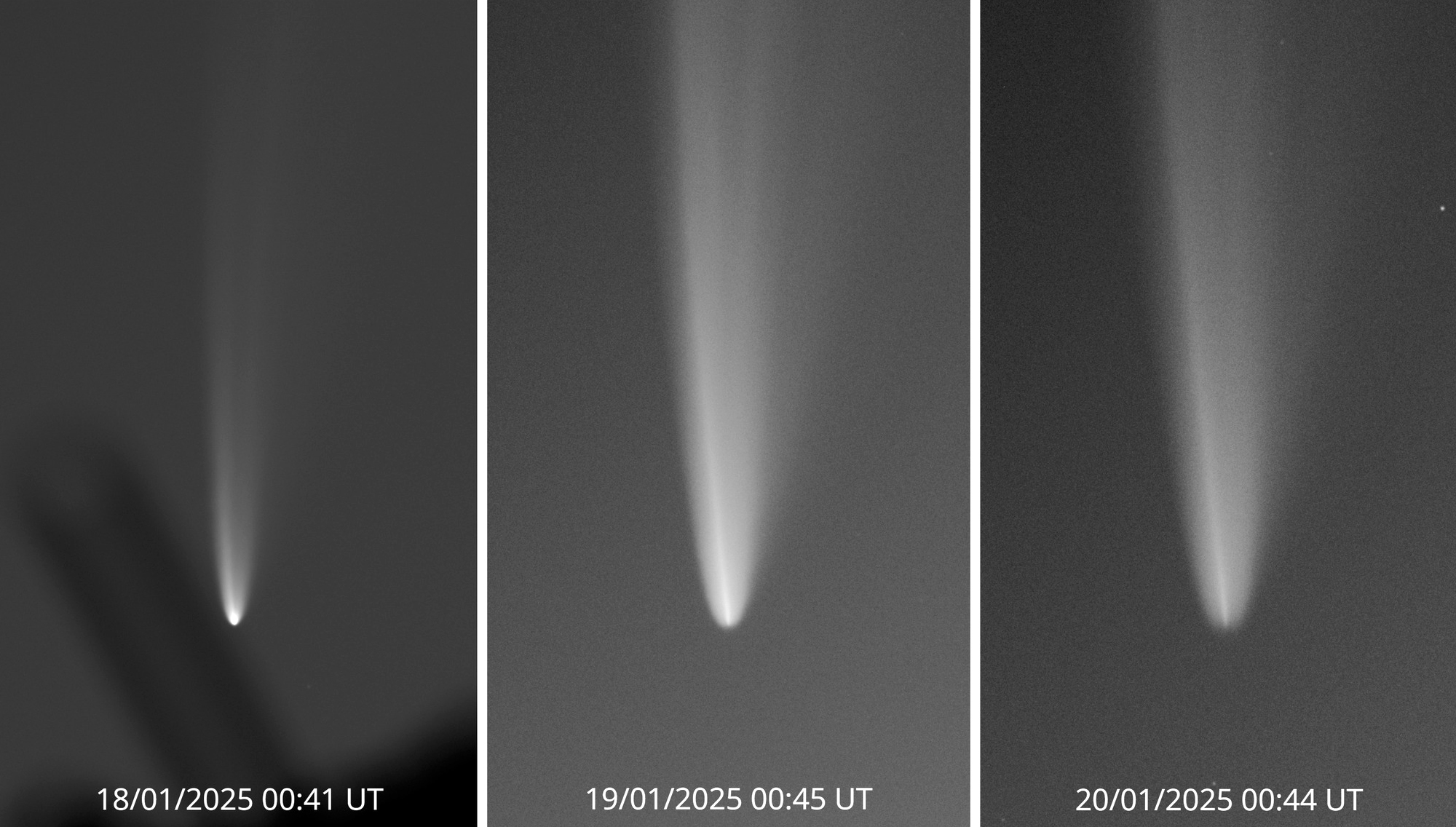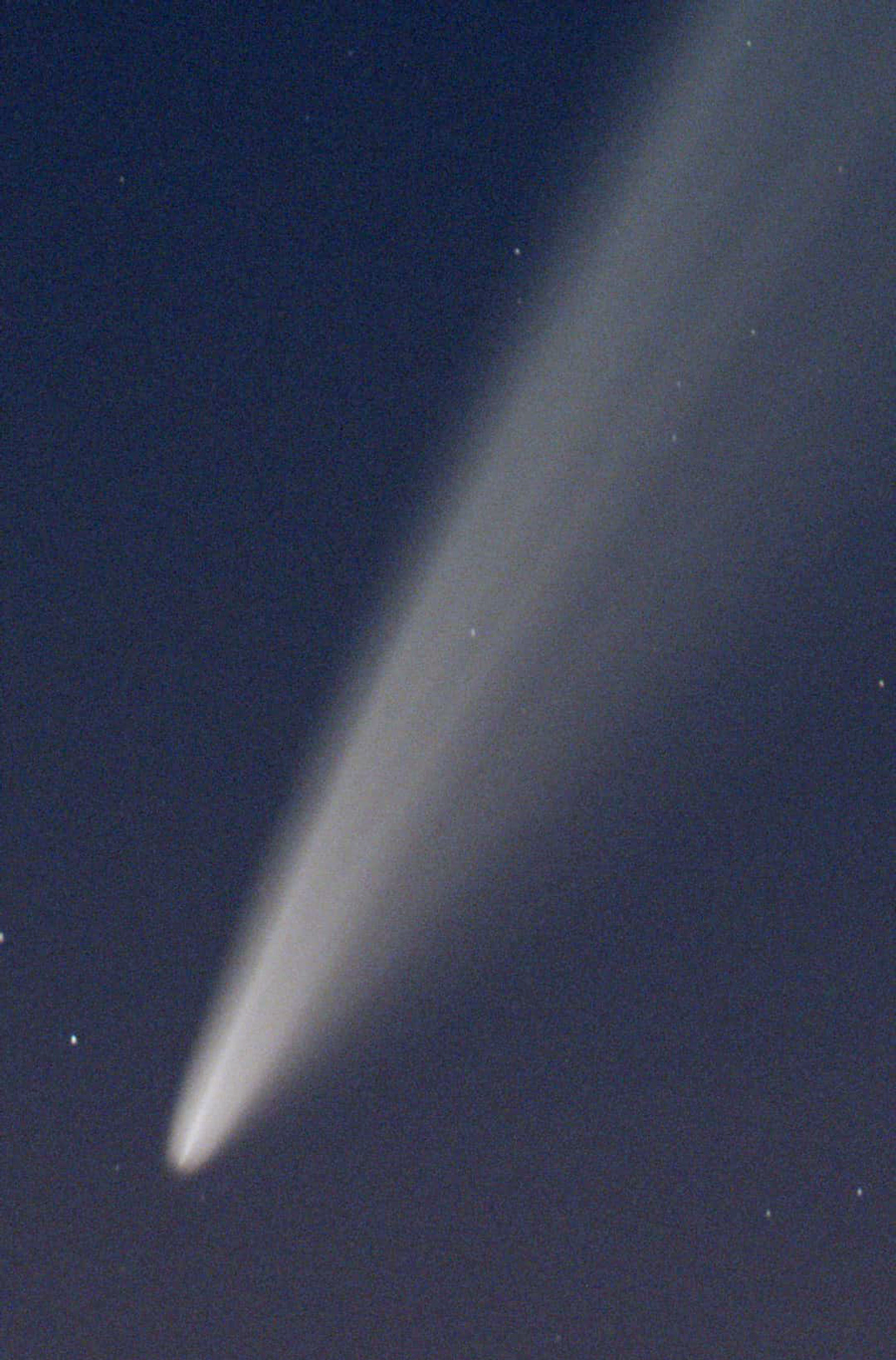22.01.2025

You can see how quickly the comet's head changed over just 3 nights, starting sharp and bright, then becoming more diffuse. The bright streak is a synchrone and comprised of dust particles released at the time the nucleus fragmented. Larger, heavier particles reside near the nucleus while smaller ones are pushed tailward by solar radiation pressure, creating the streak.
Lionel Majzik
The nucleus of Comet ATLAS (C/2024 G3) held together during a brutal perihelion but not for long. Lionel Majzik of Hungary was the first to report and record dramatic changes in the comet between January 18th and 19th. The bright, strongly condensed head rapidly became more diffuse, a sure sign that its nucleus was disintegrating based on past observations of crumbling comets. His superb sequence, photographed remotely from Chile, clearly reveal the dramatic transformation, which was later confirmed by Australian observers.

Jakub Černý
You might think that after a breakup the comet would suddenly disappear. Thankfully it will still be around for days. The dust forming the tail was expelled prior to the breakup and will linger even as C/2024 G3 fades. Meanwhile, the comet's head will maintain its form but grow fainter and more diffuse. In other words, Southern Hemisphere observers and astrophotographers are still in for a show.

Comet ATLAS displays a spectacular fanned tail and weakening head on January 20, 2025 from Australia. Details: Seestar S50.
Kelly Shung
Amateurs have a special name for comets like these — headless wonders. I've seen a few over the years both with the naked-eye and telescopically. One night the comet looks completely normal with a bright, compact nuclear region and extended tail. The next night, the core is soft and diffuse, as if dissolving before your eyes. Days later the comet maintains its shape in spite of the catastrophe. The best known of these is Comet Lovejoy (C/2011 W3). After an exceptionally close perihelion (140,000 kilometers) on December 16, 2011, the nucleus initially survived but then underwent a cataclysmic fragmentation just a few days later.
One the one hand it's disappointing to see a comet flame out as it were, but at the same time what's happening to Comet ATLAS is exactly why comet-lovers keep coming back for more. Surprises that can alter an object's appearance and future on such a short time scale are thrilling to see.

Michael Mattiazzo

Bob King
Although fading, the comet remains an easy naked-eye sight for Southern Hemisphere observers. Are there any tidbits left over for northern observers? Possibly. With a wide-angle lens and tracked time-exposure of several minutes or more, it may be possible to record multiple, faint syndynespoking over the west-southwest horizon. Make the attempt starting in late evening twilight through early darkness. You'll need an open horizon to the west-southwest. Syndynes are streaky, dust features in the tail's extremities and represent similar-sized particles ejected by the nucleus at different times. Truly, the show isn't over yet!
Quelle: Sky&Telescope
